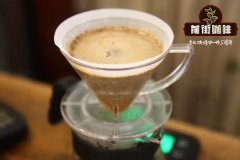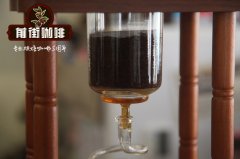Introduction to the exquisite 72-hour washing production area of Jiamoni, Kenya
[Kenya Jiamoni exquisite 72-hour washing]
Country: Kenya
Region: Kirinyaga, Kirinaga
Altitude: 1700 to 1800 m
Soil: volcanic soil
Variety: sl-28,sl-34
Treatment: 72 hours washing
Introduction of processing plant
The Kiangombe factory is 2km from the town of Kimunye in Kirinaga, named after the Kikuyu, Kenya's largest minority group, because there was a large dairy market in the village in the early days.
The Kiangombe factory was built in 1998 and belongs to the Karabe cooperative. The cooperative has more than 6, 000 members, of which the Kiangombe factory is registered with more than 600 small farmers.
The water source for washing treatment at the Kiangombe plant comes from the Mukengeria River, which is then dried on a raised tanning bed for about 20 days according to weather conditions.
Production area introduction
Kirinaga Kirinyaga
Kirinyaga is located on the hillside of Mount Kenya, near Nyeri, famous for its strong flavor, rich layers and solid taste of coffee, and Nyeri is recognized as the two best producing areas in Kenya. Most of the producers in this area are small coffee farmers who join the cooperative, while the cooperative plays an integrated role in providing washing plants, while coffee farmers send coffee cherries to the co-operative's processing plant for raw bean processing.
"Kirinaga". It is the name of Mount Mount Kenya, the highest mountain in Kenya and the second highest in Africa. It is also the local name of Mount Kenya.
The reason why Europeans call it "Mount Kenya" is said to be unable to imitate the local pronunciation "kirinyaga" very well.
Kirinyaga comes from the Kikuyu, which means "white mountain" and is thought to be the place of the gods. The Kikuyu are the most populous people in Kenya, accounting for 1/5 of the total population.
Kirinyaga comes from the Kikuyu, which means "white mountain" and is thought to be the place of the gods. The Kikuyu are the most populous people in Kenya, accounting for 1/5 of the total population. SL-28 and SL-34 are the two most respected varieties produced by the Scott laboratory in Kenya in the 1930s. The Scott Laboratory no longer exists, but it is now the National Agricultural Laboratory and part of the Kenyan Agricultural and Animal Husbandry Research Organization. Both varieties are bourbon-derived varieties, although from different pedigrees: SL-28 was developed from a drought-resistant variety originally planted in Tanganyika, which is part of modern Tanzania; it is generally considered to be of the highest quality but less productive than other commercial Arabica varieties. SL-34 is a variety originally found near Kabete and performs well at low elevations. Both SL variants showed bronze tender leaves.

Important Notice :
前街咖啡 FrontStreet Coffee has moved to new addredd:
FrontStreet Coffee Address: 315,Donghua East Road,GuangZhou
Tel:020 38364473
- Prev

Ethiopia Lim G2 Washed Region Introduction Flavor Features
Ethiopia Washed Limu G2 Country of Origin: Ethiopia Region of Origin: Limu Region Variety: Heirloom Producer: Limu Region Local Coffee Smallholder Elevation: 1850 - 1900 m Grade: Washed G2 Harvest Period: October to February Soil: Variable
- Next

What is the refreshing effect of cold-extracted coffee? what is the method of cold-extracted coffee? cold-extracted coffee tastes good.
Professional coffee knowledge exchange more coffee bean information please follow the coffee workshop (Wechat official account cafe_style)
Related
- Detailed explanation of Jadeite planting Land in Panamanian Jadeite Manor introduction to the grading system of Jadeite competitive bidding, Red bid, Green bid and Rose Summer
- Story of Coffee planting in Brenka region of Costa Rica Stonehenge Manor anaerobic heavy honey treatment of flavor mouth
- What's on the barrel of Blue Mountain Coffee beans?
- Can American coffee also pull flowers? How to use hot American style to pull out a good-looking pattern?
- Can you make a cold extract with coffee beans? What is the right proportion for cold-extracted coffee formula?
- Indonesian PWN Gold Mandrine Coffee Origin Features Flavor How to Chong? Mandolin coffee is American.
- A brief introduction to the flavor characteristics of Brazilian yellow bourbon coffee beans
- What is the effect of different water quality on the flavor of cold-extracted coffee? What kind of water is best for brewing coffee?
- Why do you think of Rose Summer whenever you mention Panamanian coffee?
- Introduction to the characteristics of authentic blue mountain coffee bean producing areas? What is the CIB Coffee Authority in Jamaica?

